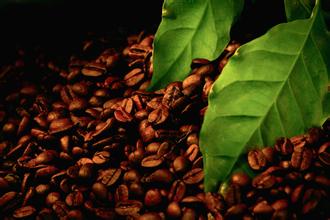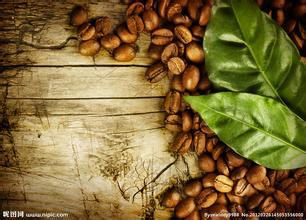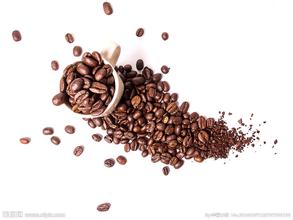Flavor description of Honduran Coffee beans introduction to manors in producing areas
Flavor description of Honduran Coffee beans introduction to manors in producing areas
The average planting height of rbara, El Paraiso, Copan, La Paz, Comayagua and Olancho is more than 1100 meters above sea level. Coffee varieties are Arabica, 69% are HG "High and low Coffee", 12% are SHG "Special Highland Coffee" and 19% are CS. There are mainly Typic, Bourbon, Caturra, Villa Sarch and Lempira.
High-quality coffee in Honduras uses water washing to deal with coffee beans, usually after soaking, when the defective fruit will surface, it can be discarded first. Then put the good fruit into the fruit peeling machine and peel off the peel with the rotating force of the machine. Peeled fruits are screened by machines to select fruits of high quality. Usually the bigger the fruit, the better the maturity. Coffee in Honduras is dried in the sun, so there is always a hint of fruity in the taste.
The term "fine coffee" was first put forward by Ms. Knudsen of the United States in Coffee and Tea magazine. At that time, Ms. Knudsen, as a coffee buyer of B.C. Ireland in San Francisco, was very dissatisfied with the neglect of the quality of raw coffee in the industry, and even some big roasters mixed a large amount of Robesda beans in the comprehensive beans, so she put forward the concept of fine coffee to advocate the improvement of the quality of the industry. This term is used to describe coffee beans with distinctive flavor characteristics that grow in a special environment. Its use in international coffee conferences makes it spread rapidly.
In fact, according to Ms. Knudsen, people started drinking fine coffee, but later, due to the growing demand for coffee, the discovery and use of new coffee varieties led to the decline of coffee quality. later, people even began to dislike this bad coffee and began to turn to other drinks. In this case, Ms. Knudsen re-made people realize the value of boutique coffee, which led to a boutique coffee boom. In the United States, there are enterprises and stores in pursuit of boutique coffee represented by Starbucks. The market for boutique coffee is also growing. In the 1990s, with the rapid increase of boutique coffee retailers and cafes, boutique coffee has become one of the fastest growing markets in the catering service industry, reaching $12.5 billion in the United States alone in 2007. Now boutique coffee has become the fastest growing coffee market. Coffee producing and importing countries around the world are aware of the great potential of the boutique coffee market, and continue to make efforts in the production and production of boutique coffee.
Honduras is less well-known in the consumer market because it does not have strong support in the handling and transportation of raw beans. However, in recent years, the country has begun to change dramatically, and the emphasis on the coffee industry has slowly opened up the international popularity of coffee from Honduras.
There are six main coffee producing areas in Honduras, including Santa Barbara, Copan, Ocotepeque, Lempira, La Paz and El Paraiso in the southeast. Honduran coffee tastes less acidic, while caramel is more sweet.
The taste of coffee from these five different producing areas is also slightly different, some slightly sour, some have a unique flavor. Its quality is not bad at present, but because it is still promoting its popularity, the price of coffee in the country is actually quite competitive.

Important Notice :
前街咖啡 FrontStreet Coffee has moved to new addredd:
FrontStreet Coffee Address: 315,Donghua East Road,GuangZhou
Tel:020 38364473
- Prev

Introduction to the description of taste and flavor in the treatment of Colombian coffee red wine
Description of taste and flavor of Colombian coffee red wine treatment process example 1: peeling the coffee fruit by Pinhalevse peeling machine, fermenting the peeled coffee fruit with 2% Pichia anomala, 2% Saccharomycopsis fibuligera and 2% Aspergillus niger at 40 degrees Celsius for 24 hours, then cleaning with ultrasonic wave
- Next

Flavor description of Sidamo Lion King Coffee Bean in Ethiopia introduction to the regional treatment of manor production
Ethiopian Sidamo Lion King Coffee Bean Flavor description: hot coffee is the best match with a delicate white bone porcelain cup, which can maintain the temperature of the coffee without affecting the taste and luster of the coffee. what's more, the colorful colors will not disturb the aroma of the coffee, and the log bottom will fully show the nature and nobility of the coffee in the cup! Or it can be said that this is low.
Related
- Detailed explanation of Jadeite planting Land in Panamanian Jadeite Manor introduction to the grading system of Jadeite competitive bidding, Red bid, Green bid and Rose Summer
- Story of Coffee planting in Brenka region of Costa Rica Stonehenge Manor anaerobic heavy honey treatment of flavor mouth
- What's on the barrel of Blue Mountain Coffee beans?
- Can American coffee also pull flowers? How to use hot American style to pull out a good-looking pattern?
- Can you make a cold extract with coffee beans? What is the right proportion for cold-extracted coffee formula?
- Indonesian PWN Gold Mandrine Coffee Origin Features Flavor How to Chong? Mandolin coffee is American.
- A brief introduction to the flavor characteristics of Brazilian yellow bourbon coffee beans
- What is the effect of different water quality on the flavor of cold-extracted coffee? What kind of water is best for brewing coffee?
- Why do you think of Rose Summer whenever you mention Panamanian coffee?
- Introduction to the characteristics of authentic blue mountain coffee bean producing areas? What is the CIB Coffee Authority in Jamaica?

